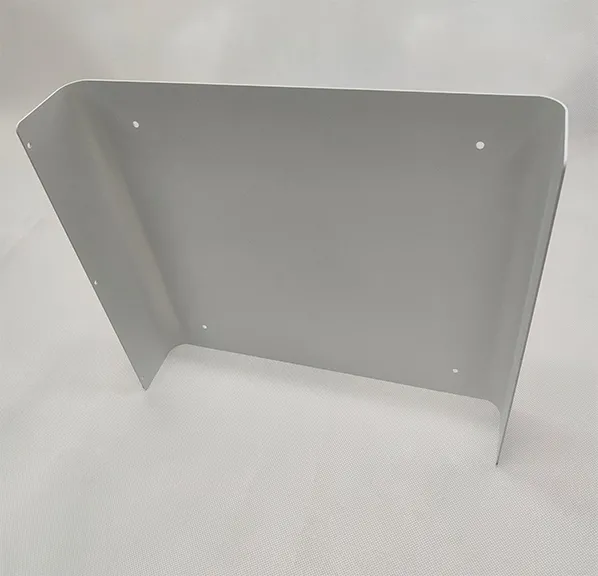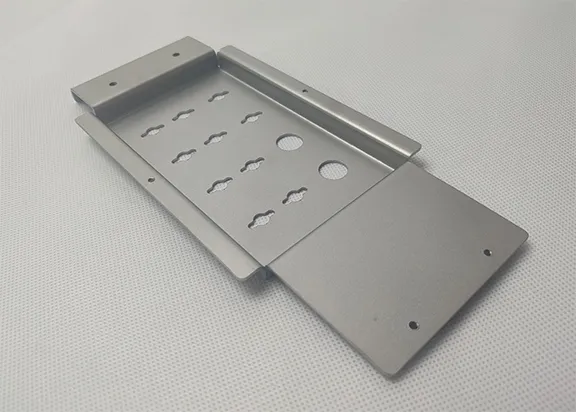What is Sheet Metal?
Sheet metal is metal formed into thin, flat pieces, usually by an industrial process. Sheet metal is one of the fundamental forms used in metalworking, and it can be cut and bent into a variety of shapes.
Thicknesses can vary significantly; extremely thin sheets are considered foil or leaf, and pieces thicker than 6 mm (0.25 in) are considered plate, such as plate steel.

What is the Sheet Metal Fabrication?
The sheet metal fabrication is a widely used metal working technology that plastically deforms a thin metal sheet by an external step force, exceeding the material’s yield strength, bending and drawing into various complicated shapes without reducing the material itself. Metal sheet metal forming processes generally require the use of high quality vowin.cn/' target='_blank'>molds to obtain the desired metal product.There are two main processing methods for sheet metal:
Non die processing: The process of sheet metal by digital punching, laser cutting, plate shearing machine, bending machine, rivet machine and other equipment, generally used for sample production or small batch production, with high cost. Short processing cycle, rapid response.
Mold processing: through the fixed mold, the sheet metal processing, generally have the blanking die, forming die, mainly used for mass production, low cost. Early die cost is high, parts quality is guaranteed. The early processing cycle is long and the mold cost is high.

The application field of Sheet Metal Fabrication
Due to sheet metal manufacturing has a series of advantages such as production and manufacturing efficiency, stable quality, low cost and the production and manufacture of complex products and workpieces,Sheet metal fabrication is widely used in the application fields of mechanical equipment, vehicles, airports, light industry, electric motor household appliances, electrical products and daily necessities, and occupies a very key influence.
What is Sheet Metal?
Stainless steel
Grade 304 is the most common of the three grades. It offers good corrosion resistance while maintaining formability and weldability.
Grade 316 possesses more corrosion resistance and strength at elevated temperatures than 304. It is commonly used for pumps, valves, chemical equipment, and marine applications
Brass
Brass is an alloy of copper, which is widely used as a sheet metal. It has more strength, corrosion resistance and formability when compared to copper while retaining its conductivity.
Aluminum
Aluminum is also a popular metal used in sheet metal due to its flexibility, wide range of options, cost effectiveness, and other properties. The four most common aluminium grades available as sheet metal are 1100-H14, 3003-H14, 5052-H32, and 6061-T6.
Grade 1100-H14 is commercially pure aluminium, highly chemical and weather resistant. It is ductile enough for deep drawing and weldable, but has low strength. It is commonly used in chemical processing equipment, light reflectors, and jewelry.
Grade 3003-H14 is stronger than 1100, while maintaining the same formability and low cost. It is corrosion resistant and weldable. It is often used in stampings, spun and drawn parts, mail boxes, cabinets, tanks, and fan blades.
Grade 5052-H32 is much stronger than 3003 while still maintaining good formability. It maintains high corrosion resistance and weldability. Common applications include electronic chassis, tanks, and pressure vessels.
Grade 6061-T6 is a common heat-treated structural aluminium alloy. It is weldable, corrosion resistant, and stronger than 5052, but not as formable. It loses some of its strength when welded.It is used in modern aircraft structures
FAQ
1.How to deal with surface treatment problems?
Sample color identification and dispensing ensure batch color consistency, strengthen manual inspection, avoid the defective products.
2.What is the best pre-treatment for prepping Aluminium castings?
Sandblasting Aluminium castings prior to finish is most common. E-coating would be a great economical operation. Chemical film is another treatment. It acts as an excellent primer for wet coat finishes on Aluminium.
3.How surface finishing works?
Almost all surface finishing processes improve either the aesthetic appearance of the product or its mechanical or chemical properties. Each surface finishing process achieves this in a slightly different way.
4.How much material is removed during the Sandblasting process?
During the Sandblasting process, the surface of a part is peened off, no part material is removed or lost at all. This process is typically used to soften parting lines or eliminate any sharp edges that could impact your line workers in the assembly process. It can also be used to give a uniform finish.
5.What the benefits of surface finishes?
Improve the appearance of your finished products, Improve resistance to wear and tear, Ensure good adhesion of paint, Meet your brand requirements...


